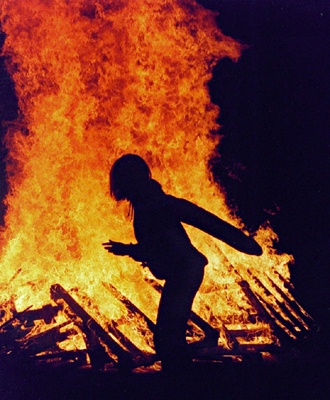All Nonfiction
- Bullying
- Books
- Academic
- Author Interviews
- Celebrity interviews
- College Articles
- College Essays
- Educator of the Year
- Heroes
- Interviews
- Memoir
- Personal Experience
- Sports
- Travel & Culture
All Opinions
- Bullying
- Current Events / Politics
- Discrimination
- Drugs / Alcohol / Smoking
- Entertainment / Celebrities
- Environment
- Love / Relationships
- Movies / Music / TV
- Pop Culture / Trends
- School / College
- Social Issues / Civics
- Spirituality / Religion
- Sports / Hobbies
All Hot Topics
- Bullying
- Community Service
- Environment
- Health
- Letters to the Editor
- Pride & Prejudice
- What Matters
- Back
Summer Guide
- Program Links
- Program Reviews
- Back
College Guide
- College Links
- College Reviews
- College Essays
- College Articles
- Back
Don't Fake Bake MAG
Skin cancer is the most common form of cancer in the United States, with more than one million new cases diagnosed annually. It is estimated that in 2003 alone 88,000 people were diagnosed with melanoma - the deadliest form of skin cancer - and that approximately 7,400 deaths resulted.
I am one of the many young adults who have been diagnosed with melanoma. In the fall of freshman year, I had a mole removed from my left arm that was malignant melanoma. Having no idea what it was, I quickly learned it can spread to the internal organs and result in death if not treated at an early stage. To my relief, I had stage one melanoma, which is curable by removing all the cancerous cells surrounding the mole. My biggest question in all this was how I had developed melanoma.
I discovered that exposure to the sun's ultraviolet radiation is the biggest cause. Contrary to popular belief, there is no such thing as a "safe tan." A tan is the skin's response to injury, so every time you're exposed, you increase your risk of skin cancer.
For teenage girls especially, the tanning bed is a common way of sunbathing. Although it may seem fast and harmless, it actually gives off twice as much ultraviolet radiation as the sun. In the 15-30 minutes most spend there, they are exposed to UVA radiation at wavelengths of 320-400 nanometers. This tremendous amount of radiation can lead not only to skin cancer, but to other serious health problems as well.
So how can we lessen our chances of developing skin cancer? We must first try to prevent the problem. Studies show that 80 percent of a person's sun exposure occurs before they reach the age of 18, so we must practice simple sun-protective behaviors like wearing sunscreen or protective clothing. Most important, remember that skin cancer is very real and could affect the rest of your life, just as it has mine. One person dies of melanoma every hour, so during the time I wrote this, an individual lost his/her battle with skin cancer. I hope you will consider what is at stake the next time you feel the urge to fake bake!

Similar Articles
JOIN THE DISCUSSION
This article has 1 comment.

0 articles 0 photos 12292 comments